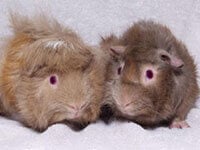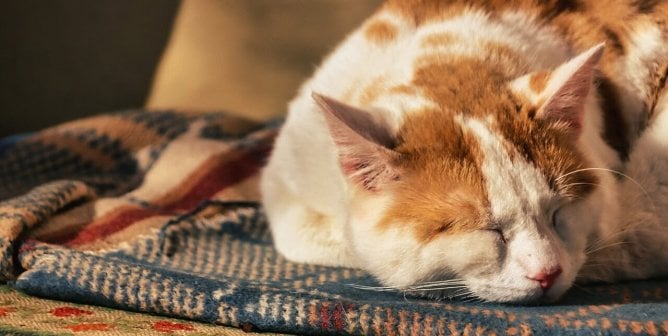Perhaps because of the perilous misconception that guinea pigs, or cavies, make great “starter pets” for children, these fragile animals—along with other small exotic animals, such as hedgehogs, sugar gliders, prairie dogs, jerboas, and spiny mice—have become popular “pocket pets.” Despite their popularity, guinea pigs aren’t worth as much as a bag of dog food to the stores that peddle them. Pet stores’ negligent policies often result in their cruel mistreatment. PETA has received reports revealing that pet store managers have instructed their staff not to seek veterinary care for sick guinea pigs, that guinea pigs were shipped to pet stores when they were too young to be weaned, that they were found to have fungus around their eyes and noses, that their habitats were teeming with mites, and that some have died from mistreatment and neglect.
How to Spot Neglect
Look for the following signs of neglect:
- swollen feet, runny eyes, lethargy, rashes, sores, bruises, hair loss, lice, or matted fur
- filthy cages, cages in direct sunlight, or cages with mesh floors—which trap small feet and are uncomfortable
- room temperatures below 70 or above 90 degrees Fahrenheit (Guinea pigs can easily develop respiratory infections if the temperature drops below 65 degrees Fahrenheit.)
- bedding made of cedar or air-dried pine shavings, which are toxic to small animals (If wood shavings are used, they should be aspen or kiln-dried pine.)
- a lack of food or water
- dirty water
See PETA’s factsheet on pet shops for more information on alerting authorities to possible abuse or neglect.
Adoption
If you’re willing to open your home to one or, preferably, two guinea pigs, please adopt from a shelter or rescue group—two rescue groups are listed below this article. Before you adopt, though, be prepared to care for your guinea pig for as long as seven years or more and to spend about $20 per week on food, hay, bedding, etc. An exotic-animal veterinarian will need to see your new animal companion annually and can also help with regular nail trimming—which is a must. If you’re housing a male and female together, you must also have them sterilized. However, spay/neuter surgeries are more dangerous to perform on small animals, so it’s preferable to house females with other females and males with no more than one other male—three or more males will fight with one another.
Provide your guinea pig with the following necessities:
- high-quality, soft timothy or other grass hay for nesting and snacking (For young, pregnant, or nursing guinea pigs, alfalfa hay is also recommended.)
- timothy hay–based guinea pig food pellets (not rabbit pellets), placed in a heavy food bowl
- small amounts of fruits and vegetables, such as carrots, apples, and cucumbers and a small salt block (no sweets, meats, or dairy products)
- a source of vitamin C, which is available in various forms from pet supply stores (Some commercial guinea pig food, such as Oxbow’s, which can be found at com, comes stabilized with vitamin C—and certain fresh foods, including bell peppers, green leaf lettuce, broccoli, and strawberries, and vitamin supplements are also safe sources of vitamin C.)
- a gnawing log, such as an untreated fruit-tree branch, to wear down incisors
- a cage (One that is at least 30 inches wide, 36 inches high, and 36 inches long should suffice for one guinea pig, but you should make it as large as you can, preferably with two levels for exploring, ramps, and a “bedroom” made out of an upside-down box with a cut-out doorway. Since guinea pigs don’t climb or jump, they can also live in open enclosures as long as other animals, including small children, will not have access to them.)
- daily cage or enclosure cleanings (Remove all substrate and wipe the floor with an antiseptic cleaner, then dry with a paper towel.)
- a brick, rough stone, or cinder block for wearing down nails
- daily exercise in a safe, securely enclosed room
- fresh water in a bottle with a sipper tube—check the tube daily for clogs
- weekly combing and brushing—essential for long-haired guinea pigs
Resources






